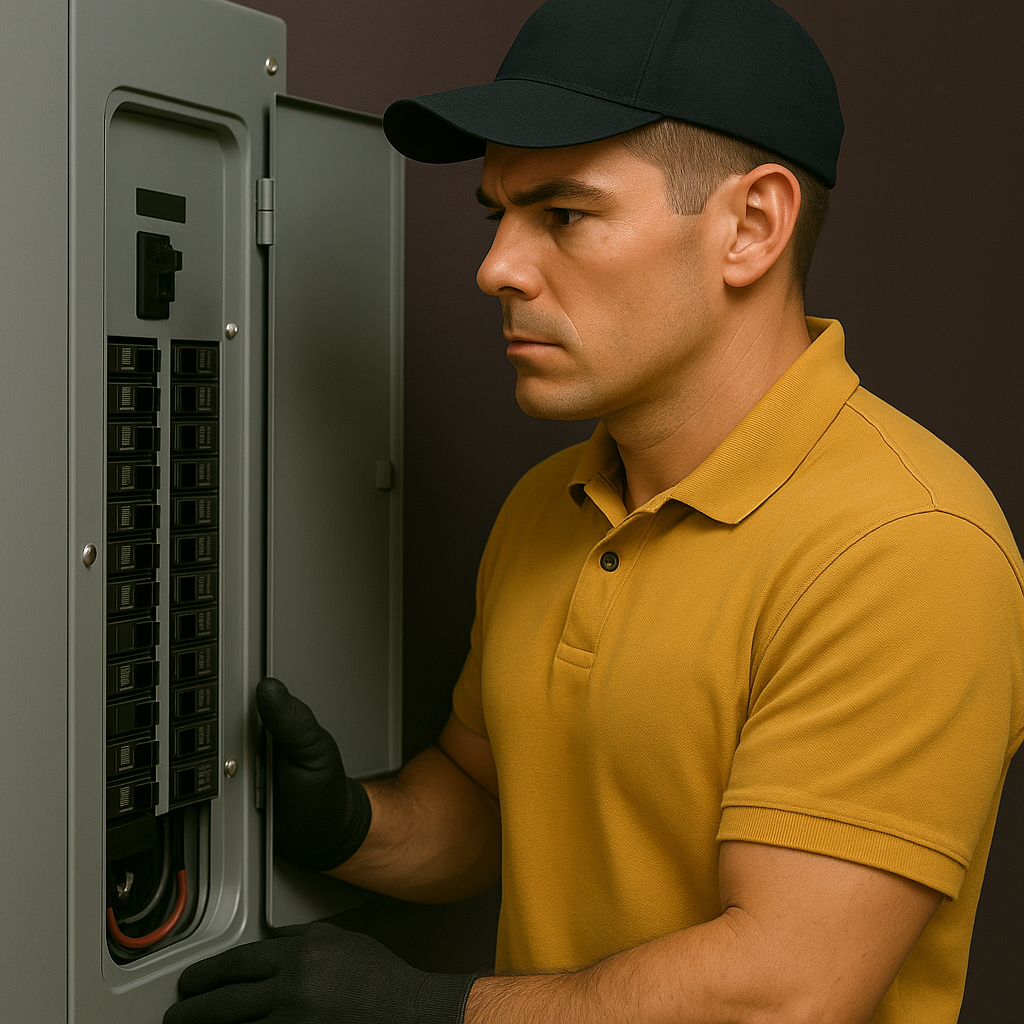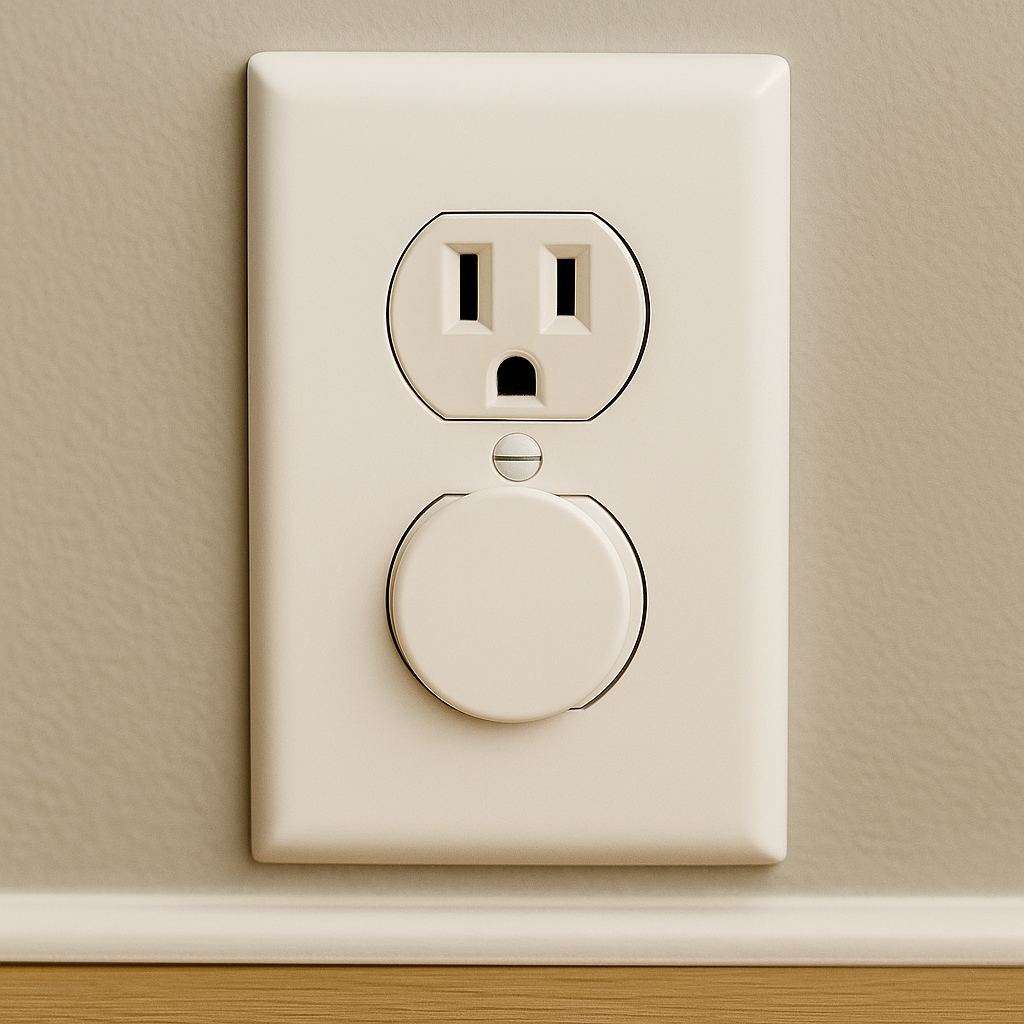How Often Should You Have Your Home’s Wiring Inspected?
Introduction
Your home’s electrical wiring is the unseen lifeline powering everything from LED bulbs to high-demand appliances like air conditioners and EV chargers. Yet this vital system can degrade over time: insulation dries out, connections loosen, and outdated components fail to meet modern safety standards. According to the National Fire Protection Association, electrical malfunctions account for more than 23,000 residential fires each year in the U.S., resulting in injuries, property damage, and even loss of life. By establishing a regular inspection schedule suited to your home’s age, construction type, and recent upgrades, you not only guard against hidden fire and shock hazards but also ensure your system can handle today’s evolving energy needs. In this guide, we’ll explore the optimal inspection intervals for every home category, identify circumstances that demand immediate evaluation, and walk through the steps a licensed electrician will take during an inspection—empowering you to make informed decisions for a safer, more reliable electrical system.
Table of Contents
Why Regular Wiring Inspections Matter
Routine wiring inspections are far more than a box to check off on a home maintenance list—they are a critical safeguard against catastrophic failures. Over time, even copper conductors can corrode when exposed to moisture or chemicals, leading to increased resistance and heat buildup. Loose connections in outlets, switches, and junction boxes create arcing that can ignite surrounding materials in an instant. Meanwhile, evolving electrical codes now mandate protective devices such as ground-fault (GFCI) and arc-fault (AFCI) interrupters to guard against specific fault conditions. Without professional inspections, hidden defects go unnoticed until they manifest as power interruptions, damaged electronics, or worst of all, house fires. Scheduling periodic evaluations ensures your system stays code-compliant, reduces the potential for costly emergency repairs, and provides the peace of mind that your home’s wiring is in sound condition.
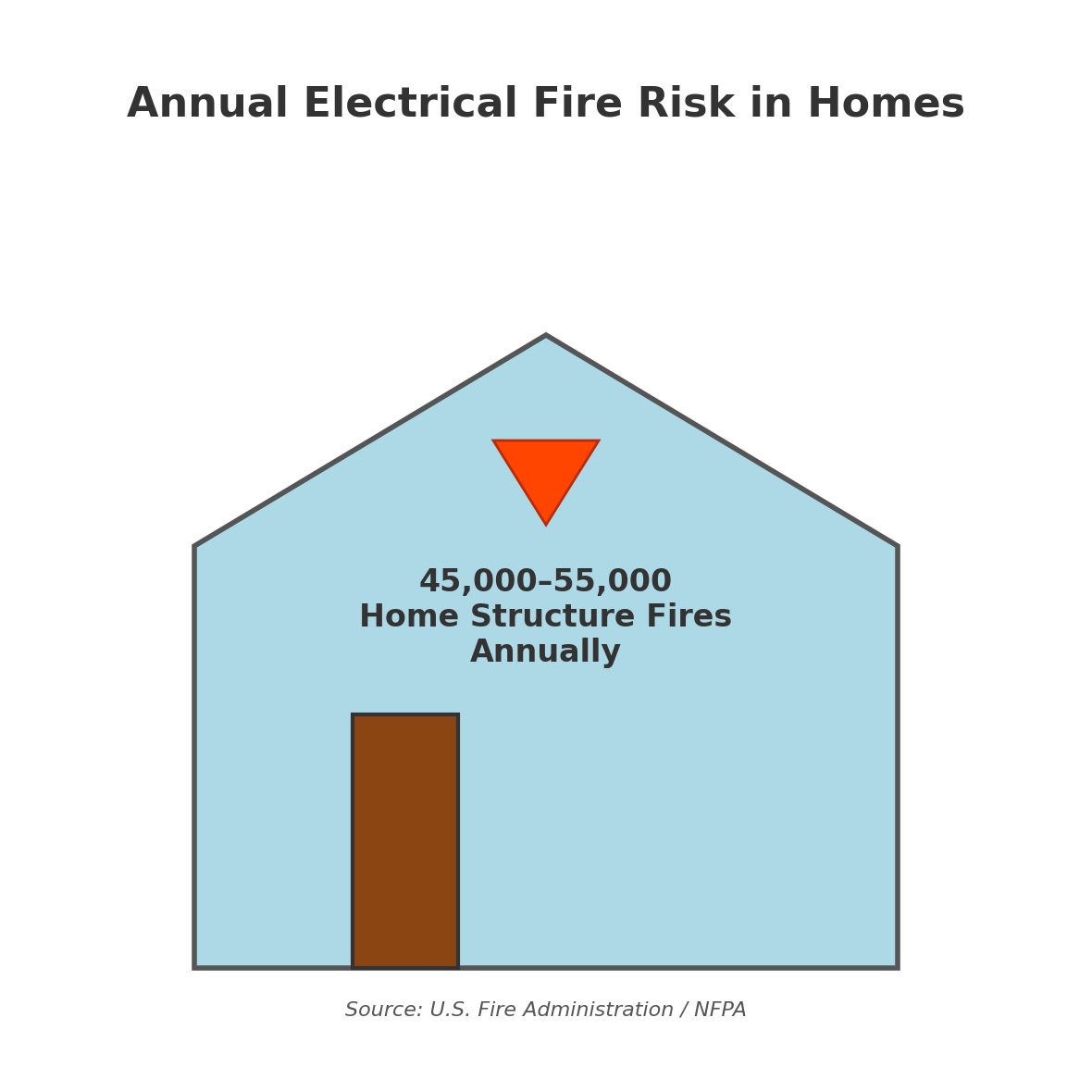
Recommended Inspection Intervals
The age and condition of your home largely determine how often you should engage a licensed electrician for a wiring inspection. Newly constructed homes—those less than ten years old—benefit from an initial inspection around the five-year mark to catch any installation defects before they become entrenched. Homes built between ten and twenty-five years ago, where insulation may be aging and circuit loads have increased, should be evaluated every three to five years to ensure connections remain tight and protective devices function correctly. For older homes—especially those exceeding twenty-five years—wiring methods such as knob-and-tube or early aluminum conductors may still be in place. These systems lack modern grounding and are prone to wear; we recommend scheduling inspections every one to three years. Moreover, any substantial renovation or addition, from remodeling a kitchen to installing a hot tub, calls for a targeted inspection within three months to verify new circuits and panel work. By tailoring your inspection cadence to your home’s specific profile, you can proactively address issues before they escalate.

Special Circumstances Requiring Immediate Inspection
Certain events and upgrades demand immediate electrical scrutiny, regardless of your routine schedule. After major renovations—including new branch circuits, panel upgrades, or the addition of high-load equipment like EV chargers—an inspection within ninety days confirms that the work was performed safely and in compliance with code. Similarly, exposure to water from flooding or leaks, fire damage, or rodent activity in walls can compromise insulation integrity and connection tightness; these situations call for inspections as soon as it is safe to restore power. If you’re buying or selling a home, a pre-closing inspection not only uncovers liabilities but also streamlines negotiations. Finally, before activating new high-demand appliances—such as spas, whole-house generators, or advanced home automation systems—a dedicated circuit verification ensures your wiring can handle the load without risk of nuisance trips or hidden overheating.
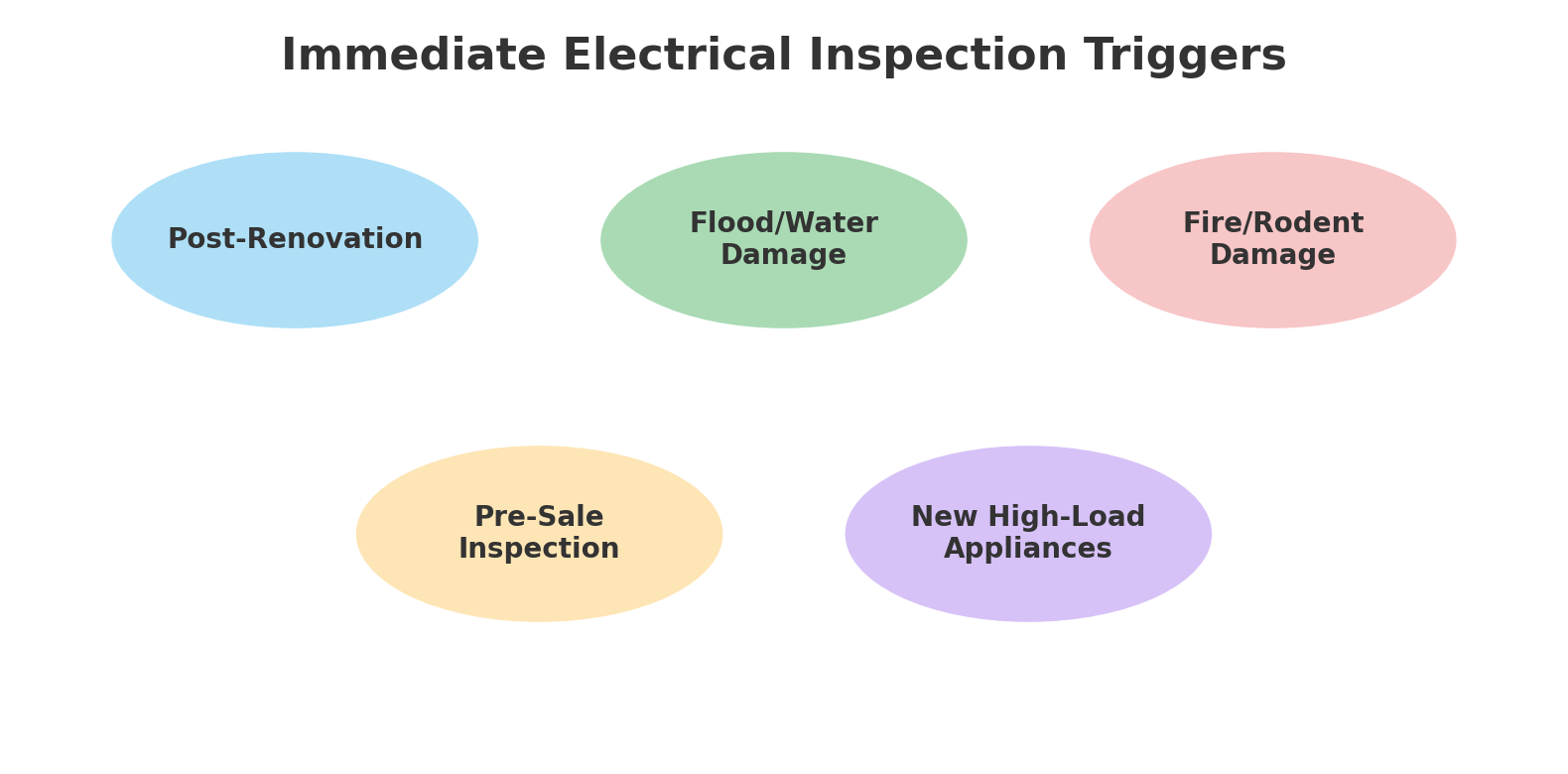
What Happens During an Electrical Inspection
When a licensed electrician arrives for a wiring inspection, the process combines visual examination, diagnostic testing, and functional verification. The electrician begins with a thorough visual and thermal scan, looking for scorch marks, moisture ingress, and “hot spots” behind panels using infrared imaging. Next, a load analysis with clamp-on ammeters measures current draw on critical circuits, identifying any that exceed their ampacity ratings. The inspector then verifies proper grounding and bonding, tracing the grounding conductor from receptacles back to the main bonding jumper in the service panel. GFCI and AFCI devices are systematically tripped and reset to confirm they react within code-mandated times. Finally, the panel itself is opened to inspect bus bars, breakers, and terminations for corrosion, wear, or overheating. Upon completion, you receive a detailed report outlining any deficiencies, recommended repairs, and compliance upgrades—forming the basis for informed maintenance or renovation decisions.
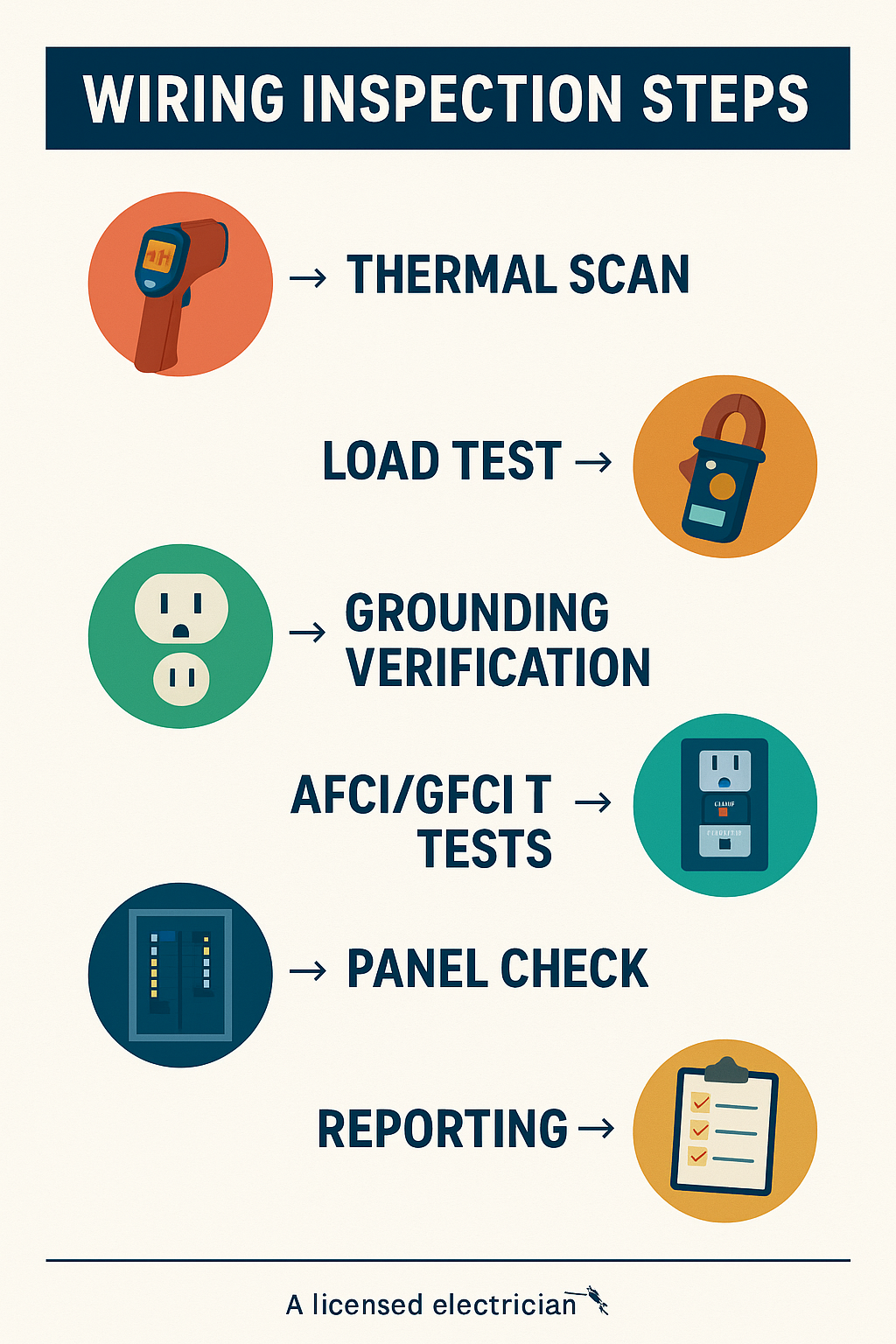
Benefits of Timely Inspections
Investing in regular electrical inspections delivers immediate and long-term dividends. By identifying and correcting loose terminations or degrading insulation early, you dramatically reduce the risk of electrical fires and costly emergency repairs. Many homeowners insurance providers offer premium discounts for documented safety inspections, lowering your annual costs. A well-maintained electrical system also promotes stable voltage delivery, extending the lifespan of sensitive electronics, motors, and appliances. Finally, an up-to-date inspection report enhances your property’s market appeal, reassuring potential buyers with proof that the home’s wiring is safe, code-compliant, and ready for modern energy demands.
DIY Warning Signs Between Inspections
While professional inspections are irreplaceable, vigilant homeowners can look for telltale signs that indicate problems between scheduled check-ups. Pay attention if lights flicker or dim when appliances cycle on, breakers trip frequently under normal loads, outlets or panels emit buzzing sounds, or you detect burning odors near electrical components. Even a mild shock or tingling sensation upon touching a switch or appliance signals faulty grounding or insulation breakdown. Spotting these symptoms early and contacting a licensed electrician can prevent minor nuisances from evolving into severe safety hazards.
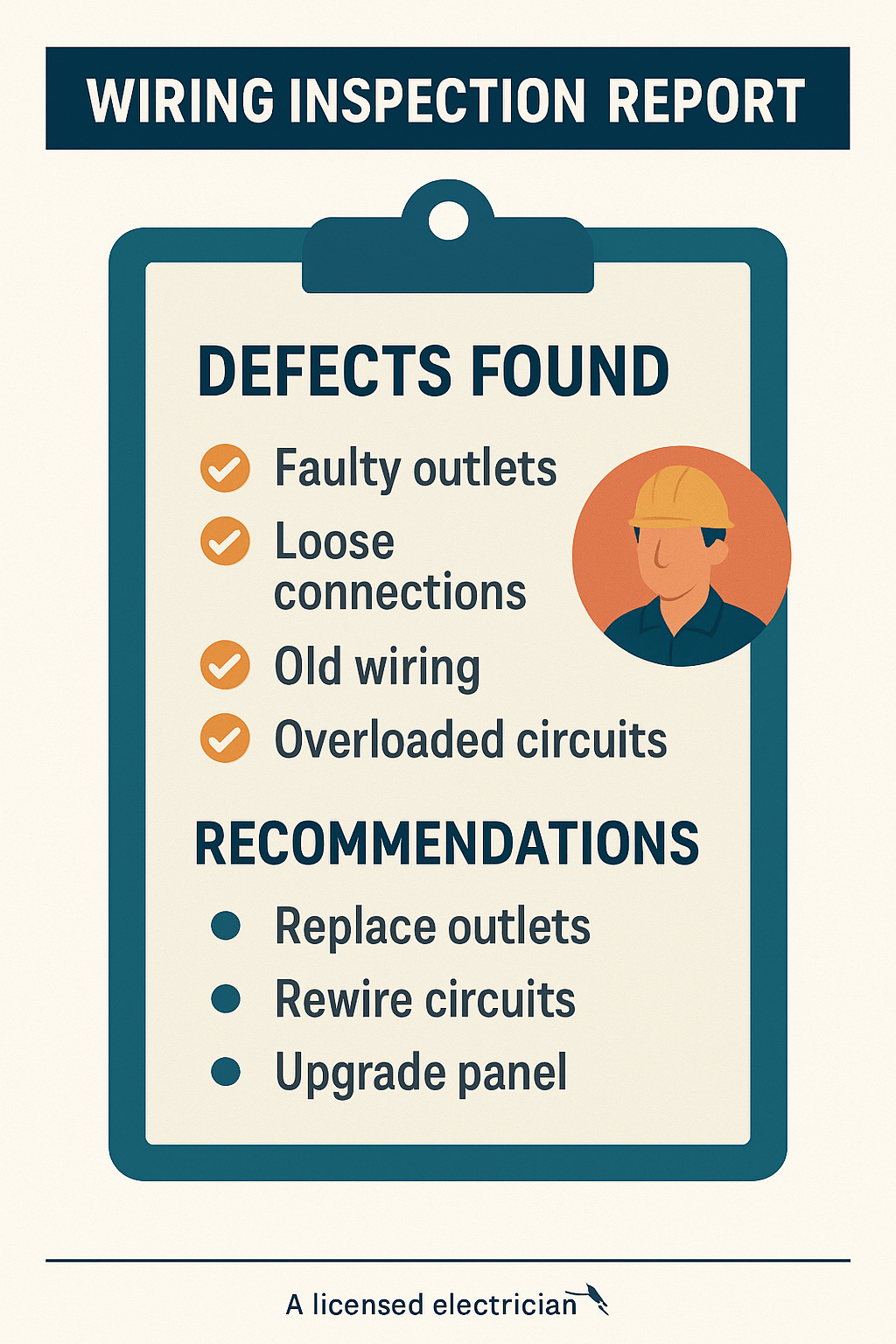
Conclusion
Determining the optimal frequency for wiring inspections hinges on your home’s age, construction history, and any recent modifications. Whether you reside in a brand-new subdivision or a century-old bungalow, aligning your inspection schedule with industry best practices and code requirements is essential for safeguarding your family, property, and investments. Proactive, licensed electricians–led evaluations uncover hidden defects, validate protective devices, and ensure your electrical infrastructure can support today’s sophisticated appliances and tomorrow’s innovations. By making regular inspections a cornerstone of your home-maintenance routine, you minimize fire risks, stabilize energy costs, and enjoy the confidence that your home’s wiring system is reliable and fully code-compliant.
Since 1984, C.A.S.E. Contracting has been the trusted partner for residential and commercial electrical services across Grass Valley, Nevada City, North Auburn, Penn Valley, Truckee, and Downieville. To schedule your comprehensive wiring inspection, simply call us at (530) 277-0917 or send an email to casecontractinginc@gmail.com. You can also learn more about our services—which include panel upgrades, generator installations, EV charger setups, and complete rewiring—by visiting our website atwww.casecontractinginc.com or stopping by our office at 123 Main Street, Grass Valley, CA 95945. Let C.A.S.E. Contracting ensure your home’s electrical safety and efficiency with our expert, insured electricians.
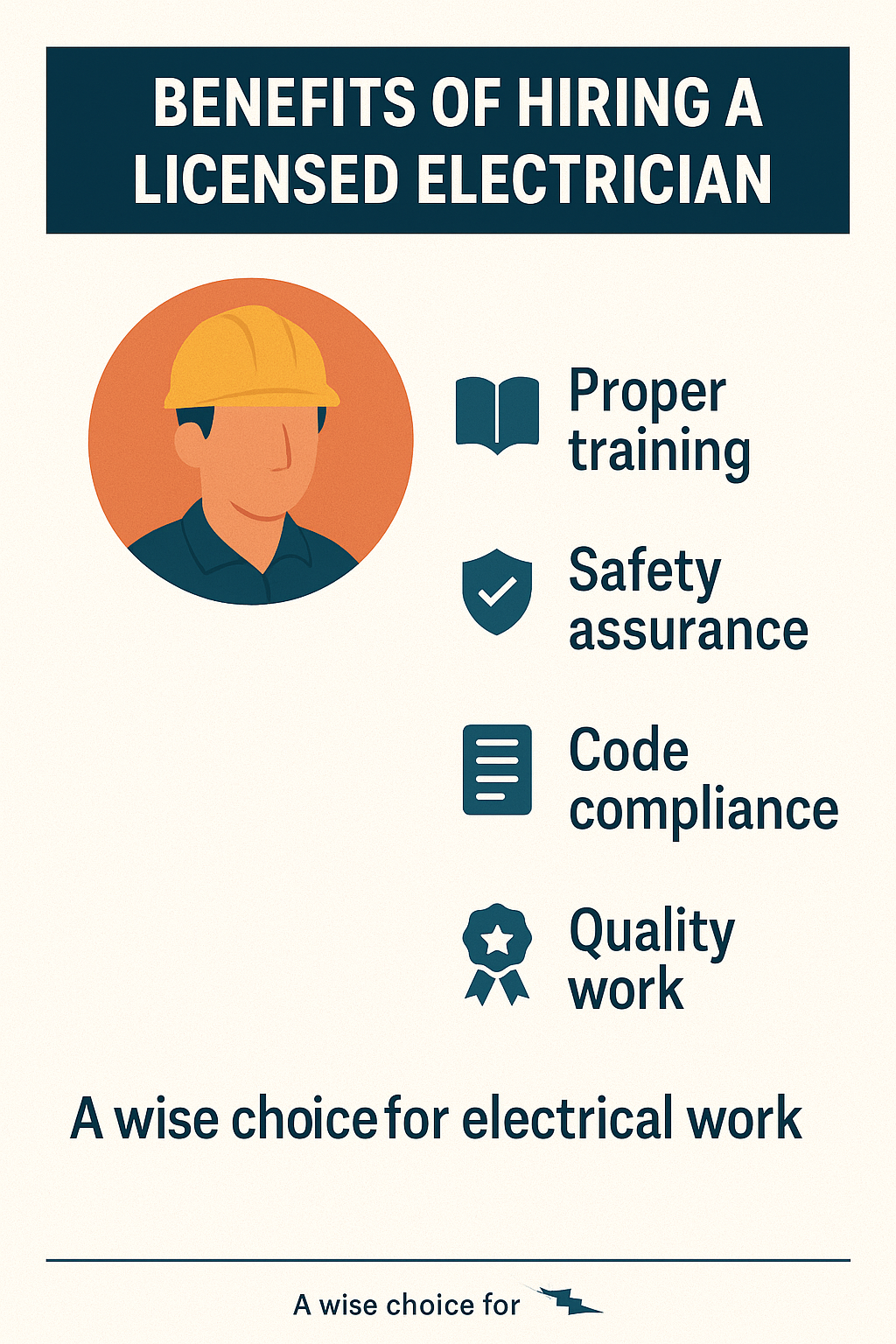
FAQs
1. How much does a professional home wiring inspection cost?
Inspection fees vary by region, home size, and scope of work, but most homeowners can expect to pay between $150 and $300. This small investment typically pays for itself by preventing expensive emergency repairs.
2. Can I perform a wiring inspection myself?
While you can look for visible damage such as scorch marks or frayed insulation, only a licensed electrician has the tools and expertise—infrared cameras, clamp meters, and code knowledge—to test hidden faults, verify grounding integrity, and ensure full compliance with current electrical standards.
3. Does installing a new electrical panel start a new inspection cycle?
Upgrading your main service panel addresses many safety and capacity issues, but branch circuit connections, receptacle terminations, and protective devices still require periodic review. Continue following age-based intervals for a comprehensive safety program.
4. What happens if my home fails the inspection?
Your electrician will provide a detailed report highlighting all deficiencies and prioritizing repairs. Common remedial actions include tightening loose connections, replacing worn outlets and breakers, upgrading grounding paths, and installing required AFCI/GFCI protection.
5. Are there incentives or rebates for electrical inspections?
Some utility companies and insurance carriers offer rebates or premium credits for documented safety inspections and energy-efficient upgrades. Consult your local provider and review current incentive programs to maximize your return on investment.

